Commvault Unveils Clumio Backtrack - Near Instant Dataset Recovery in S3
Introducing Clumio BaaS for AWS EC2/EBS
Back in November of last year, Clumio delivered the first native backup as a service platform for AWS Elastic Block Storage (EBS). Enterprises enjoyed the ability to natively protect EBS consistently across all their accounts, full indexing plus cataloging of their data while saving up to 50% cost reduction compared to AWS snapshots. Shortly afterward, our cloud data platform expanded across public, private, and SaaS clouds delivering new levels of flexibility of protecting data, no matter where it lands. Today we are excited to further expand our functionality and flexibility within AWS with the newest addition to our native AWS protection with EC2 Backup as a Service for AWS.
Enhanced AWS Data Protection: Granular Options for Fast Restores, Cost Efficiency, and Air-Gapped Security
This expansion of the native protection within AWS gives customers more options to protect their data at various granularities including:
- Fast and Flexible Restores: Deliver consistent protection at various granularities from EBS to EC2, giving you options for protection and restores. This granularity reduces RTO times and enables faster access to data when needed.
- Operational Simplicity: Clumio’s powerful unified policies allow enterprises to create policies that span across multiple data sources making consistent protection simple and easy across public, private, and SaaS clouds. Policies within AWS are applied to AWS tags, so no need to re-create the wheel, just use existing methodologies to define specific applications and retention.
- Cost-Effective Protection: AWS EBS snapshots are way too expensive especially for mid to long-term retention. Clumio provides better protection at up to 50% lower costs compared to AWS snapshots. If you only need operational recovery via snapshots, start off with our free snapshot manager at no cost.
- Air-Gapped Protection: Having snapshots of EBS or EC2 in the same account is risky. If a bad actor gets access to your account they get both the production data and the backup. Clumio copies the data outside the account and stores it in an immutable fashion to protect you against internal or external bad actors.
- Data Consistency: Since protection is occurring at the EC2 level, all EBS volumes attached to the EC2 instance are consistently protected at the same time. So for lift and shift legacy applications with a volume manager or filesystem stripped across the volumes, you can ensure the volumes will be protected consistently and the restore will always be successful without a ton of utilities to get it back up and running.
Beyond these values, the new addition of EC2 brings a new experience for restores that gives you more control. Let’s review some of the new options.
EC2 Snapshot Management and Air-Gap Data Protection:
We include snapshot management and air gap backup outside your AWS account in a single unified policy. Since snapshot management is free it can be an awesome place to start with pure operational recovery, then move into an air-gapped backup solution where data is stored outside your AWS account. You can configure both in the updated policy engine for EC2 shown below.
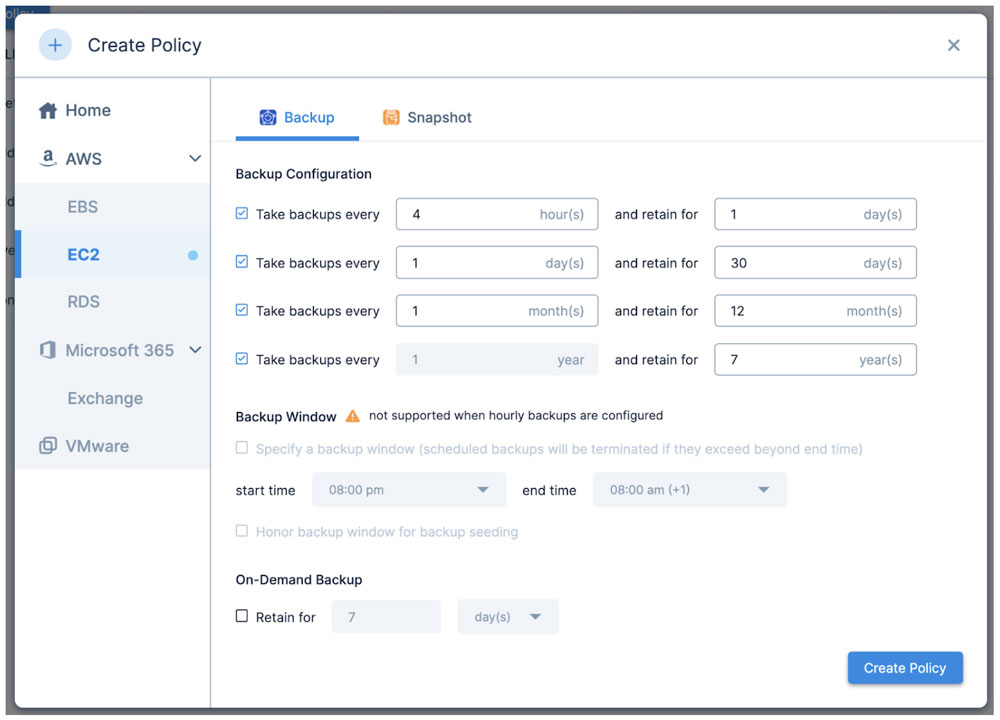
Updated Calendar View for EC2:
As you can see in the updated calendar view there are indicators of snapshots or backups available for restores. Blue stands for backups and orange for snapshots. This visual indicator makes selecting the point in time to restore easy.
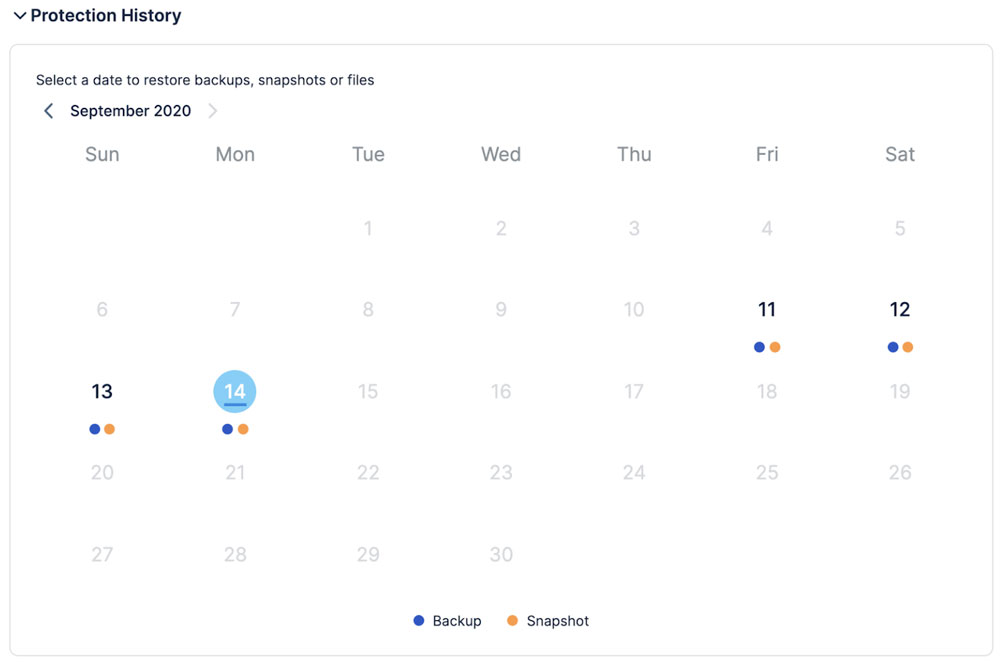
Once you click on a specific date you can see all the points in time for restoration. Notice how you can see when the snapshot or backup is expiring and if it is browsable. Since snapshots are stored in the AWS account alongside the data, we do not ingest the data for indexing and cataloging. Full backups on the other hand are browsable and they are indexed and ready for filesystem browsing or searching for specific files.
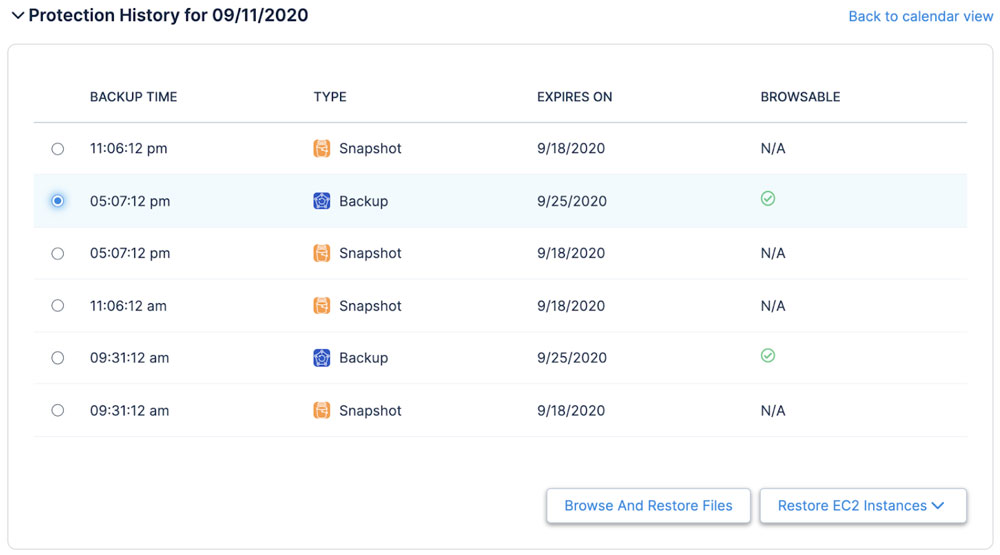
Updated EC2 Restores Processes:
The experience of restoring EC2 instances is more flexible as well. When clicking Restore EC2 Instance, you get a choice of basic or advanced restores similar to all our data sources, but you will see a ton of new options in the advanced restore workflow.
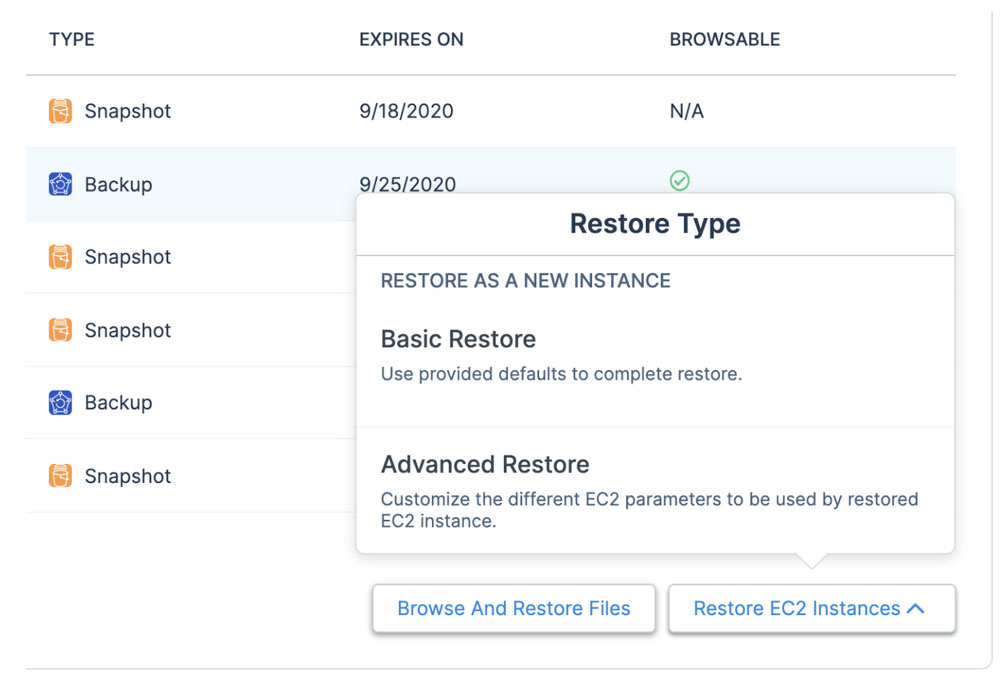
EC2 Basic Restore:
The basic workflow gets your restores done quickly while giving you all the details you need to ensure a successful restore. A few options in this basic restore is changing the name of the VM, checking out the EBS volumes and see what is attached, and check out the tags.
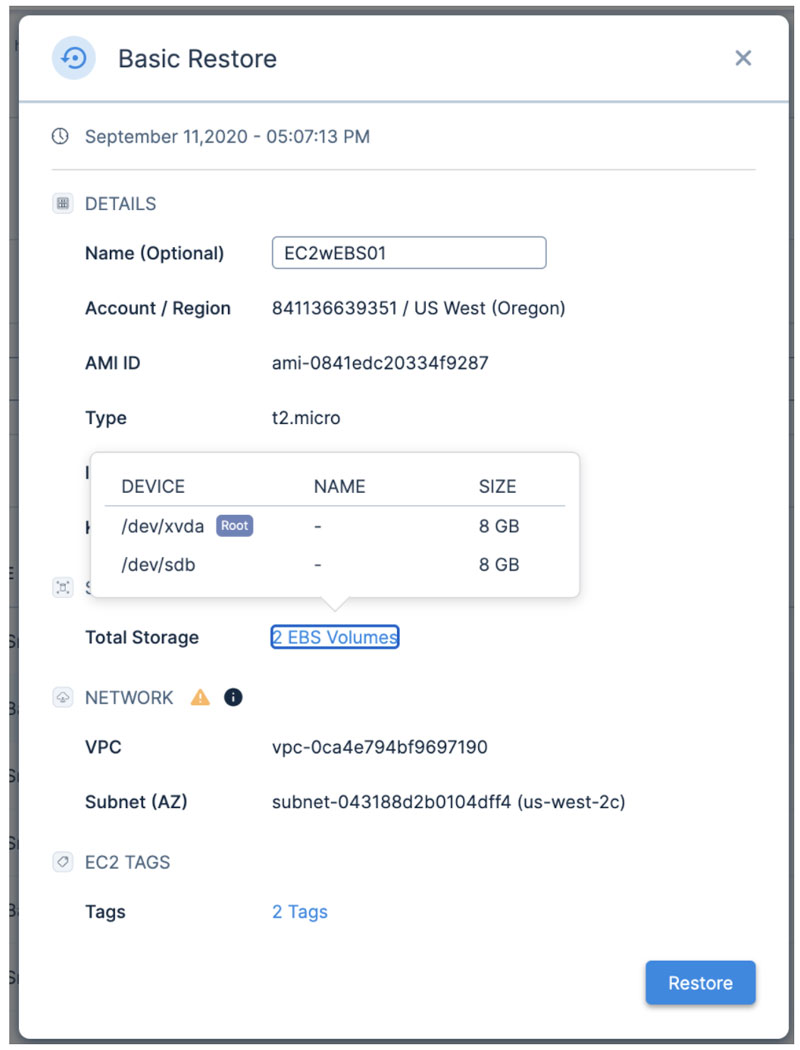
EC2 Advanced Restore:
Advanced restores workflow provides a ton of flexibility to change how you restore the EC2 instance across details, storage, networking, and tags. In the details section you can change the following on restore:
- EC2 Name: change the EC2 instance name on restore.
- Account Region: restore the EC2 instance back to the same account or to another AWS account.
- AMI ID: change the AMI identifier if needed and it will validate the AMI ID is correct for you.
- IAM Role: change the IAM role to something else compared to the original EC2 instance.
- Key Pair: change the key pair from the one currently assigned to something else.
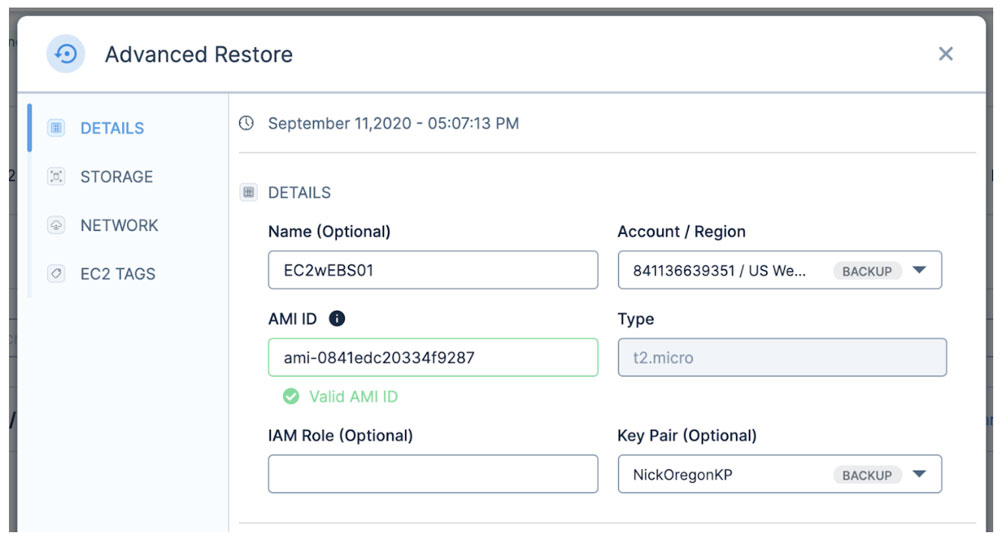
In the storage section, you can dig into each of the EBS volumes and make changes as needed to make your restore fast and easy. You can change the name, enable encryption and apply a KMS key, and add tags to the volume. These options make use cases like test/dev much more user friendly to ensure that data volumes are protected.
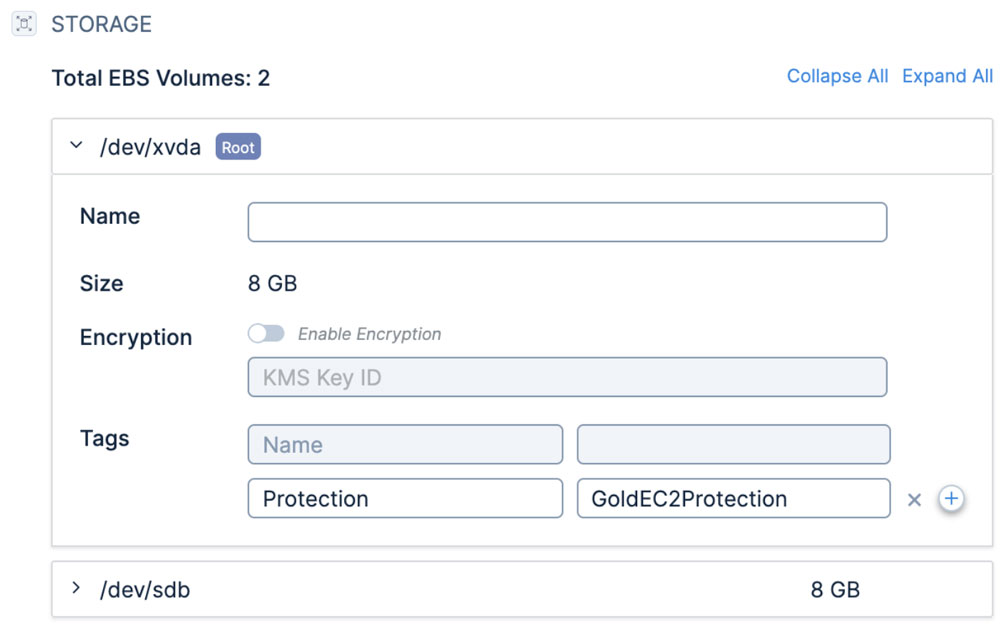
The network section allows you to change the VPC ID and Subnet ID from the one it was backed up from to another.
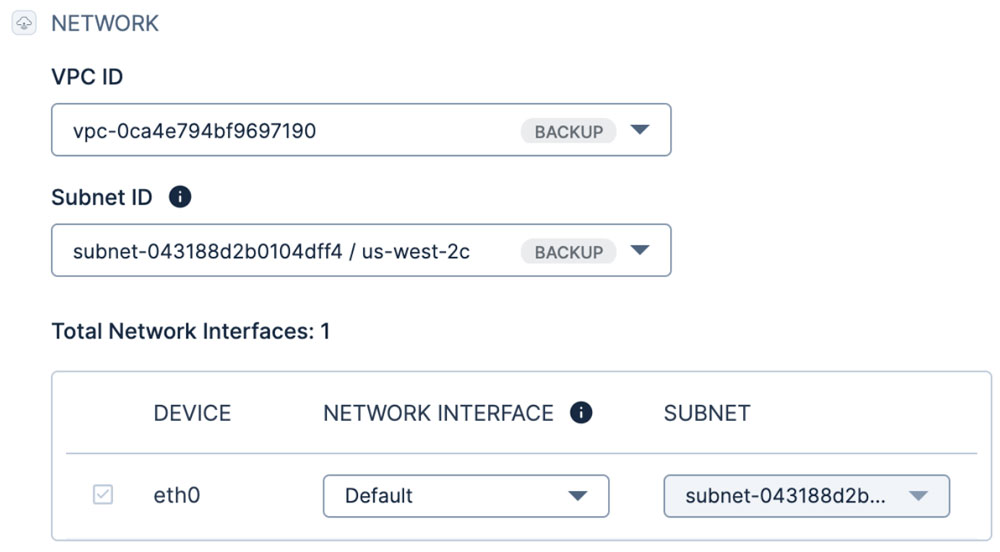
And lastly is the EC2 tags, which you can remove or add during the restore process for the newly restored EC2 instance.

Flexibility is key in the cloud and Clumio’s new Backup as a Service for EC2 enables a new customer experience resulting in super-fast RTOs, plus opens up new use cases along the way. To showcase how this all works, please check out the following demo from our resident cloud expert, Nic Hernandez, Clumio Cloud Systems Engineer.
